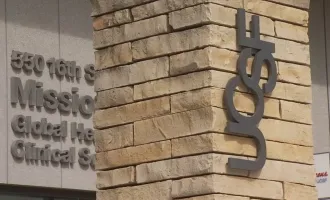
Between 2 Worlds
If you live in the United States for so long it’s difficult to imagine a world where we are not the center. Staying in Chengdu, China challenged this notion and presented me with a very different reality.
Stroll down any given street and you can witness an age old culture that still looms in the hearts of all the locals. Take a turn around a different block, and witness the youth paving the way into a generation of technology and modernism. This is exactly what inspired me to waste no time and soak in everything I possibly could.
Initially, I really did not know what to expect, other than the fact that I would be in Chengdu experiencing the life of dental student at WCCS (West China College of Stomatology). However, I was excited to go to a different country and see how a different political and economic landscape can shape the dynamic between dentistry and research.
In many ways, I expected a stark contrasts between UCSF’s program and WCCS’s dentistry program. But this was not the case, and I saw many similarities between the two schools. Attending courses with local students and conversing with them in both Mandarin and English, I learned that China’s younger generation were the driving force of China’s scientific growth. Students both in the USA and China were driven by the ambition to be scholars.
In regards to curriculum and academic structure, I realized that dental schools in the United States promote students to selflearn through problembased learning or online literatures, modules, and podcasts. In China, lecturebased learning is more prevalent.
Furthermore, dental education in China is more of a subspecialty of medicine, or “stomatology”. This explains the inherent differences and higher presence of oral maxillofacial surgery and craniofacial surgeries performed in China than in America.
Interestingly, American dentistry features more structured career pathways. Here, dentists engage in a fulltime work, attend continuing training/education programs, belong to an association, gain legal status, and construct a code of ethics emphasizing quality of care.
On the other hand, in China professional development is still considered primarily in the context of promotion or achieving a higher professional title.
In conclusion, Chengdu is an urban center and transportation hub for the entire Sichuan region of China. Furthermore, ambitious youth are driving forward scholarly discovery in many areas – just like at UCSF.
It is therefore no surprise this city is at the forefront of Stomatology and dental education. I learned from this culturally rich but brief adventure that I will never truly understand all the idiosyncrasies that make China so unique. China is just too vast, too diverse and too old.


